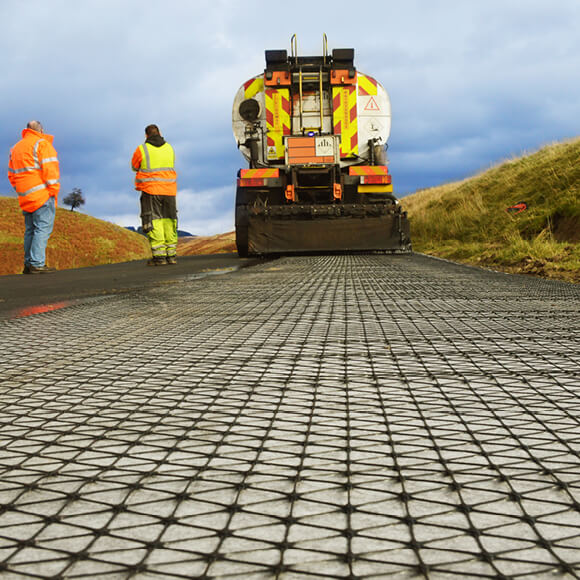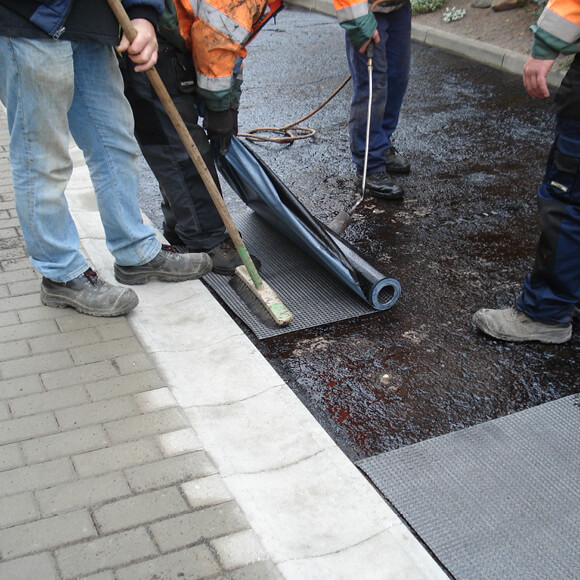
Tensar® Glasstex®Grid-R
- One of a range of Tensar of asphalt interlayer products
- Tensar has over 30 years of experience with asphalt interlayers
- GlasstexGrid-R interlayer provides a reinforcement function to asphalt pavements
- Controls cracking in asphalt to extend pavement life
Tensar GlasstexGrid-R is a low-profile interlayer product comprising a coated grid of glass filament bundles, bonded to a very lightweight non-woven backing fabric. The high-modulus glass filaments provide high absorption of stress at low strains, delivering a reinforcement function as defined by EN 15381. The polymer modified coating provides protection and stability to the glass yarn grid. The lightweight backing fabric is only present to assist with adhesion during installation and subsequently permits intimate contact between overlying asphalt and the underlying surface.
Typically installed under the asphalt binder course, Tensar GlasstexGrid-R high-stiffness coated grid is bonded to the asphalt, providing a reinforcement function by absorbing stress at low strain levels.
The reinforced layer created, prolongs service life by controlling reflective cracking and mitigates longitudinal cracking caused by differential settlement between new and existing lanes on widened roads.






